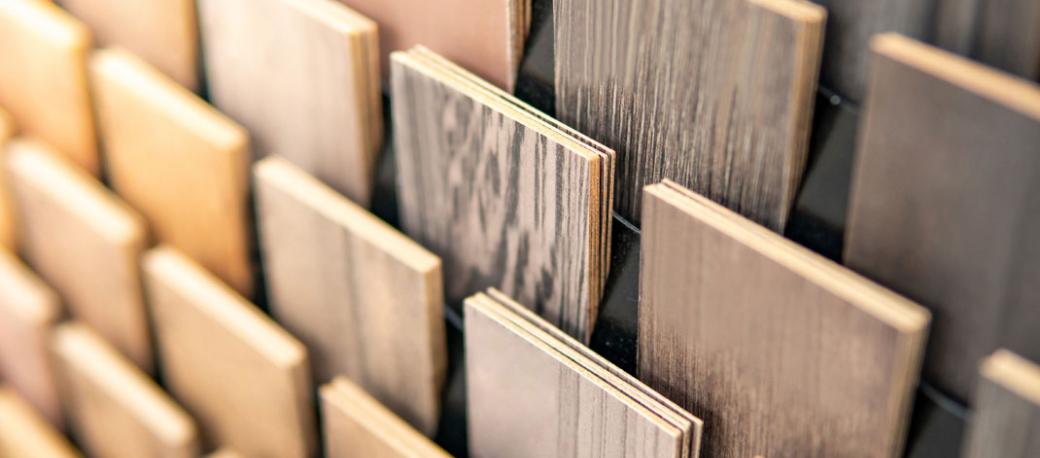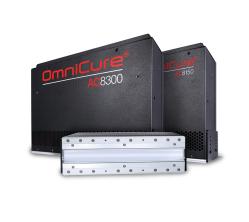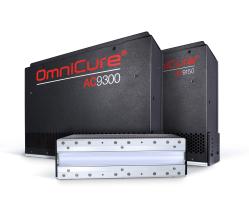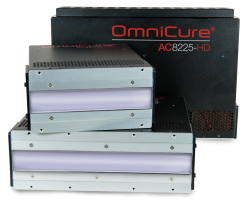Wood Coatings

Ultraviolet (UV) curing for wood coatings provides an effective and efficient alternative to traditional air, moisture, and thermal cured coatings. UV curing provides faster curing times, reduced energy consumption, and improved coating performance. Additionally, the process emits fewer volatile organic compounds (VOCs) to support compliance with ISO 14001 and reduces the emission of hazardous air pollutants (HAPs), making it a more sustainable and environmentally friendly option for wood coatings.
Our OmniCure® AC Series LED Large Area UV Curing Systems offer some of the most advanced and reliable UV LED curing solutions on the market, enabling manufacturers to produce high-quality products, with more durable and long-lasting coatings.
Understanding UV Curing in Wood Coating Applications
UV curing involves exposing a specially formulated resin to high-intensity UV light. This process initiates a photochemical reaction that causes the coating to harden and become cured, creating a durable scratch-resistant finish on wood surfaces.
The two main types of UV curing light sources used in wood coating applications are mercury vapor lamps and LED lamps. Mercury vapor lamps have traditionally been used and are well-established in the industry, while LED lamp technology is newer and rapidly gaining popularity due to higher energy efficiency and longer lamp lifetime.
UV curing is widely used in wood coating processes. Many UV-curable fillers, stains, sealers, primers, and topcoats (pigmented, clear, varnishes, lacquers) are used in the manufacture of a broad range of wood-based products, including furniture, pre-finished flooring, cabinets, doors, panels, and MDF.

UV Curing for Furniture
UV curing is often used to cure coatings on wood-based materials used in the manufacturing of furniture such as chairs, tables, shelving, and cabinets. It provides a durable, scratch-resistant finish that can withstand wear and tear.
UV Curing for Flooring
UV curing is used to cure coatings on hardwood floors, engineered wood floors, and luxury vinyl tile. UV curing creates a hard, durable finish and can enhance the natural beauty of wood and vinyl flooring.
UV Curing for Cabinets
UV curing is used to cure coatings on wood-based materials used in the manufacture of wood cabinets for kitchens, bathroom vanities and custom furniture pieces, producing a hard, scratch-resistant finish that can withstand daily wear and tear.
UV Curing for Wood-Based Substrates
UV curing is a popular technology for wood-based substrates such as kitchen cabinets, office furniture, wood flooring, and wall paneling. Some common wood-based substrates are medium density fiberboard (MDF), plywood, particleboard, and solid wood.
Advantages of UV curing include:
High Efficiency and Fast Production Rates
- Faster curing times
- Elimination of lengthy drying times
- Precise control to reduce waste
- Elimination of lamp warmup times
- Ideal for temperature-sensitive applications
Reduced Environmental Impact
- Reduction or elimination of VOCs
- Reduced energy consumption and costs
High Quality Finish
- Improved scratch and wear resistance
- Improved durability
- Improved adhesion and chemical resistance
Advancements in UV Curing Technology for Wood Coating Applications
Newer UV curing technologies offer faster curing times, lower energy consumption, and reduced operating costs, making UV curing an increasingly popular choice in the wood coating industry.
One of the most significant advancements has been the development of UV LED curing technology, which has proven more energy-efficient, provides longer-lamp lifetime, and is more environmentally friendly than traditional UV lamps. Additionally, new types of UV-curable resins and coatings have been developed, which offer superior hardness, scratch resistance, and chemical resistance.
With ongoing advancements in UV curing technology, many wood coating manufacturers are exploring the benefits of UV curing and implementing this technology to improve the efficiency and sustainability of their operations.


